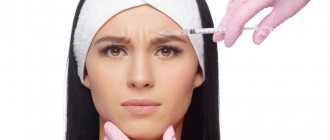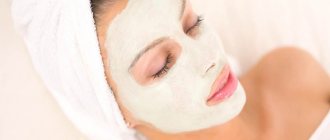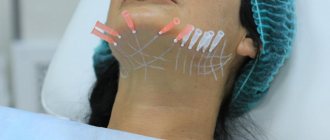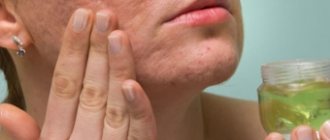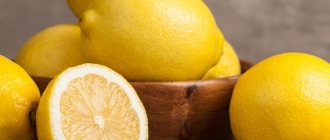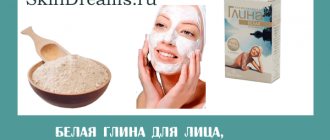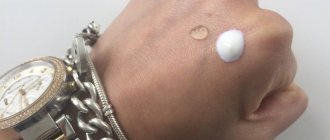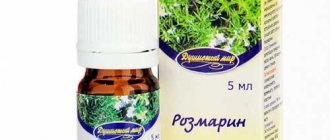Acne is a widespread problem that affects about 90% of teenagers and 35% of people over 25 years of age.
Usually accompanied by inflammatory processes that damage the epidermal and dermal layers of the skin. The consequences are various forms of aesthetic changes in the skin - post-acne, which can be deep and disfiguring .
Pharmaceutical companies and beauty salons offer various means and methods for getting rid of post-acne . But sometimes the effects of acne last a lifetime.
What remedies for post-acne exist and does getting rid of this problem always require significant material costs?
Causes of scars and acne scars
Post-acne does not appear only under the influence of certain factors:
- self-squeezing pimples;
- incorrect selection or lack of treatment;
- fungal or bacterial infections;
- exposure to sunlight on fresh scars;
- weakened immune system;
- large size rashes.
If the pores are not properly cleansed, sebum begins to accumulate inside, causing inflammation to increase in size, affecting a large area of healthy skin. This leads to the formation of a large amount of scar tissue, which differs in structure from the dermis; it is much denser, and therefore visually noticeable.
Melanin is actively synthesized in the cells of such tissue, and therefore the scars look darker. During periods of increased solar activity, scars turn out darker and are more difficult to treat.
Important! With age, collagen synthesis slows down, and therefore the number of scars on problem skin increases.
Causes
The main reasons for the formation of post-acne symptom complex (skin defects) include:
- Long-term acne with frequent relapses. Prolonged multiple rashes sharply reduce the skin's immunity, deplete its regenerative abilities, which contributes to the development of post-acne even with mild inflammation.
- Intensity/severity of acne. Complications arise mainly in severe destructive forms of acne (nodulocystic, spherical multiple dense rashes, etc.), accompanied by inflammatory elements affecting the deep layers of the skin. Severe dermal inflammation during healing causes vascular disorders, redistribution of melanocytes and the formation of scar tissue.
- Inappropriate acne severity/late treatment of the disease, which contributes to the development of a deep inflammatory process/formation of severe forms of acne.
- Excoriated acne. Traumatization of acnetic elements by the patient himself during self-squeezing and “cauterization” of acne (neglect of the rules of cleaning, incorrect squeezing technique lead to pressing of purulent contents into the deep layers and stretching of the skin). The result is red spots, enlarged pores, pits and acne scars.
- Hyperkeratosis /skin impurities. Against the background of insufficient cleansing of the skin during a long course of the disease, a dense layer of keratinized epidermis/impurities is formed, which prevents the natural release of pores/the release of the contents of inflammatory elements. As a result of the skin, expansion/stretching of skin pores spreads inflammation in depth to adjacent healthy areas of the skin.
- Mechanical removal of rash elements (deep damage to acne elements due to unskilled removal).
Immunodeficiency conditions can contribute to the appearance of skin defects after acne; autoimmune diseases affecting connective tissue; diseases of the endocrine system; tendency to form keloid scars ; diseases of the gastrointestinal tract, liver; avitaminosis .
Types of scars and scars after acne
Dermatologists distinguish several types of post-acne:
- Atrophic . Appear as a result of the synthesis of an insufficient amount of collagen in tissues. Externally they look like depressions on the surface of the skin. This type of scar is the most common among post-acne scars. Such scars form at the site of large rashes affecting the deep layers of the skin.
- Normotrophic . This type of scar is flush with the skin. They look like spots that become more noticeable as the temperature drops, when the blood supply to the upper layers of the skin becomes less intense.
- Hypertrophic . They are formed due to excessive collagen synthesis at the site of injury. They rise above the skin level and are therefore especially noticeable. Such scars most often form in people with hyperkeratosis, as well as those with thick skin.
- Keloids . Consist of a special type of connective tissue. Outwardly, they can look like hypertrophic ones, but at the same time they can bother you for a long time with itching and redness around the scar. They occur in areas of skin tension, where scar tissue is constantly subject to tension, which leads to micro-tears and greater growth.
Based on their appearance, dermatologists distinguish several types of scars:
- Chipped . They are also called V-shaped. They look like depressions with chipped edges. Over time, the diameter of the scar may decrease, but without special treatment such scars do not go away.
- Rectangular . Appear in areas of extensive skin damage. The edges are chipped, but the angle of the chip is close to straight. Such scars may be shallow, but have a fairly large area.
- Rounded . When forming rounded scars, the body produces more collagen than when forming chipped and rectangular ones. Because of this, the edges of the scar smoothly blend into healthy skin.
- Convex (hypertrophic) . Appear as a result of the production of excess collagen. Protrude above the level of healthy skin. They can have both smooth and rough surfaces.
Fresh scars are pink, sometimes with a bluish tint. Over time, they lighten, but when formed during periods of solar activity, they can, on the contrary, be darker than the general tone. Most often, scars appear on the skin of the face, back, neck, chest and shoulders. Less common on the legs and arms.
General information
Post-acne is persistent skin changes localized at the site of resolved acne. Currently, in dermatocosmetology the term “post-acne” is used, which includes a symptom complex of secondary manifestations formed as a result of the evolution of inflammatory acne of various forms. It has been established that with a long course of acne, the presence of deep inflammatory elements, frequent traumatization of acne directly by the patient himself, inadequate/late treatment, the incidence of post-acne symptom complex in people with acne varies within 40-65% of cases, and in papulopustular/nodular -cystic forms of acne in 95% of patients. Since acne is a chronic, often recurrent dermatosis , dermatologists/cosmetologists often have to immediately deal with the treatment of acne and leveling the clinical manifestations of post-acne (the need to remove acne marks).
The main manifestations of post-acne include:
- post-inflammatory hyper/depigmentation of skin areas (dyschromia);
- persistent enlargement of pores (excretory ducts of the sebaceous glands);
- uneven microrelief/texture of the skin;
- pathological atrophic, hypertrophic and keloid scars (slang scars);
- erythematous congestive spots;
- formation of atheromas and milia .
Manifestations of post-acne as an outcome of acne are extremely varied and, in the presence of unfavorable conditions, can form even after mild and relatively shallow inflammatory acne, ranging from barely noticeable to disfiguring. As a rule, the severity of changes significantly correlates with the severity of acne, the frequency of relapses and the duration of the disease. It should be taken into account that vascular/pigment changes (spots, darkening of the skin and persistent redness) caused by acne are often temporary, while structural changes in collagen (scar changes) are irreversible and are the most severe complication of acne, occurring in 5-5 years. 7% of patients.
Despite the fact that the post-acne symptom complex is not a life-threatening condition, its problem is extremely relevant, due to the significant impact of persistent cosmetic defects on the quality of life of patients. It was found that almost 75% of those examined with post-acne have psycho-emotional disorders of varying severity, correlating with the severity of the consequences of dermatosis . This problem is especially relevant for females, whose physical attractiveness largely determines their success in social/reproductive functions. In addition, getting rid of acne scars is often quite difficult and expensive, and in some cases, acne scars cannot be completely removed.
Examination by a dermatologist
Before starting treatment, a mandatory consultation with a dermatologist is required. The doctor will assess the condition of the skin and help you choose the optimal treatment method.
During the inspection, a qualified technician checks the following aspects:
- the presence of active inflammation;
- condition of scars, their depth and location;
- the presence of chronic diseases that can cause acne relapse;
- scraping for demodicosis;
- allergies to medications;
- general skin condition;
- examination of mucous membranes and hair;
- prescribing tests and examinations;
- preliminary selection of a scar removal method.
Before starting treatment, the doctor must make sure that there are no active inflammations on the surface being treated - they are an absolute contraindication to most post-acne removal procedures.
Then, based on the condition of the skin, the degree of its damage and the nature of the scar tissue, the doctor selects a treatment method and determines the duration of its implementation.
Rules for caring for skin with scars and acne scars
Skin with acne requires careful care. The cosmetics industry offers a lot of products to reduce the number of scars, but the components in their composition have a rather aggressive effect, and therefore can dry out already damaged skin.
Therefore, cosmetologists recommend adhering to a number of recommendations:
- Constant hydration . When replenishing moisture reserves, more collagen begins to be synthesized in the dermis. This helps to effectively reduce the size of scars. Scar tissue is denser than regular skin, and therefore requires more moisture to maintain cell turgor.
- Gentle cleansing . Mild cleansers do not dry out the epidermis, thinning it. This helps not only maintain moisture levels, but also preserves the skin’s natural protective layer and prevents the early appearance of wrinkles.
- Correct selection of cosmetic products for care . Those with acne are advised to get rid of mattifying foundations, powders, and comedogenic substances in skin care products. This will help prevent the appearance of new rashes and improve turgor.
- No self-medication . Do not use aggressive skin care products for post-acne skin. When used independently, it is very easy to violate the technology of use, which will lead to additional damage and may cause the appearance of new scars and burns.
- Proper nutrition . The diet of people with post-acne must include foods containing fatty acids - nuts, flax seeds, sesame seeds, as well as clean water. These products promote faster skin renewal, improve its condition and maintain health, and prevent the appearance of early wrinkles.
Note! The use of various medium and deep peels should only be carried out by a qualified specialist.
For what reasons do post-acne appear?
The formation of acne in people of different ages can be caused by both natural and pathological reasons. Poor environmental conditions, hormonal imbalance and poor nutrition provoke the development of acne.
However, for some people this problem goes away without a trace; for others, scars remain. What is this connected with?
This problem often occurs in people with oily or combination skin. The reason for this is a malfunction of the sebaceous glands. As a result, the pore becomes clogged and pus begins to accumulate, followed by the development of a pimple.
The main reasons for the development of post-acne include the following factors:
- Inflammatory processes of a spherical or nodular type, related to the type of deep inflammation of the epidermis;
- Squeezing a pimple. If it is not yet mature enough and the pus cannot be released through mechanical action, the risk of injuring internal tissues and epithelium increases. As a result, the infection re-spreads, the healing time increases, which leads to the formation of a scar. In addition, when squeezing, an infection can get into the open wound, which will significantly worsen the situation. Therefore, it is recommended to treat the skin with antiseptic drugs during the entire period of treatment of the pathology;
- Insufficient quality of pore cleansing with incomplete removal of pus, which accumulates in acne and provokes the formation of a new pimple;
- Failure to comply with the rules of skin treatment before and after cosmetic procedures in the salon or at home;
- Lack of treatment for rashes in the early stages of development. If you do not pay attention to the spread of the disease in time, the number of dark spots will only increase and it will become more difficult to eliminate them.
The main reasons for the formation of scars include untimely and improper removal of rashes.
Therefore, the best method of treating the problem is to prevent the spread of acne or actively treat it in the early stages.
How to get rid of scars and scars after acne at home?
Home methods for removing acne are a unique alternative to salon procedures and medications. Home remedies have a gentle effect on the epidermis, promoting lightening, smoothing the microrelief and improving nutrition.
Lemon juice
Lemon juice can be used as a light peeling. It has an exfoliating and brightening effect, and therefore is used to treat post-acne and lighten spots on the surface of the skin. In addition, lemon juice disinfects and therefore prevents the appearance of new rashes.
Directions for use:
wipe the skin with a piece of fresh lemon;
- prepare a solution of juice with boiled water in a 1:2 ratio and use it instead of tonic;
- freeze the juice solution and wipe the skin with such an ice cube 2 times a day.
Duration of use ranges from 4 weeks to 6 months. Suitable for oily and normal skin. Those with dry and sensitive skin should avoid using products containing lemon juice, as this may cause an allergic reaction.
Note! Lemon juice increases photosensitivity, and therefore is not recommended for use during periods of increased insolation.
Tomato juice
Fresh tomato juice is applied to the cleansed skin surface for 10–15 minutes, after which it is washed off with cool water. The course of application is from 1 to 3 months. The mask is used for all skin types except sensitive.
cucumbers
Cucumber juice disinfects, refreshes and brightens. It is used both to treat post-acne and to relieve inflammation from active acne.
Can be used in several ways:
- applications of fresh cucumber slices to the affected areas;
- mask - fresh cucumber puree is applied to the affected areas for 10-15 minutes;
- lotion - cucumber juice is mixed with boiled water and this lotion should be wiped over the surface of the skin.
Duration of use can be up to 6 months.
Almond oil
Almond oil helps fight scars and scars and prevents the appearance of stretch marks.
Fatty acids in the composition stimulate collagen production, which helps reduce the size of post-acne.
The oil is rubbed into the affected areas once a day at night. The course of treatment is 3–6 weeks.
Note! Almond oil cannot be used for demodicosis, as it can cause an exacerbation.
Banana
Fresh banana puree contains essential microelements and amino acids. Apply it to the face for 7-10 minutes and then rinse with cool water.
The duration of treatment is 4–6 weeks. Suitable for all skin types.
Apple vinegar
Dilute natural apple cider vinegar with water in a ratio of 1:3.
Freeze the resulting liquid in ice trays and wipe your skin with it 2 times a day.
You can also make compresses from a vinegar solution - moisten gauze with it and apply to problem areas for 5-7 minutes.
The duration of the course of use is 8–10 weeks.
Note! Apple cider vinegar increases skin photosensitivity.
What ingredients should you pay attention to?
Certain substances and natural extracts that are included in special cosmetics will help get rid of post-acne. When choosing products, pay attention to the following active ingredients.
- Vitamin C. A hero in the fight not only against skin aging, but also against pimples and pigmentation. It promotes wound healing, reduces melanin production and protects the skin from harmful UV rays.
- Niacinamide. A frequent guest in whitening cosmetics. It improves blood microcirculation in cells, soothes, gently brightens and evens out skin tone. In addition, niacinamide promotes natural collagen production and prevents dehydration.
- Galactomisis. This unique yeast evens out skin color and texture and lightens acne spots and freckles.
- AHA acids. Fruit acids (citric, malic, lactic, glycolic, tartaric) gently renew the skin, exfoliating dead particles from its surface, including in areas of post-acne. In addition, they perfectly moisturize the epidermis and relieve inflammation.
- BHA acid. Salicylic acid is considered one of the most effective remedies for combating acne and its consequences. It perfectly exfoliates and renews the skin, reduces inflammation, tightens pores, fights pathogenic bacteria, dries, and heals.
- Propolis. It copes well with acne and eliminates blemishes after them. It has antibacterial, immunomodulatory and anti-inflammatory properties.
- Arbutin. Contained in lingonberries and mulberries. Safely whitens the skin and prevents further appearance of pigmentation. Protects the skin from photoaging, increases its protective functions and relieves inflammation.
- Snail mucin. Capable of a lot. It will get rid of acne, lighten spots, improve complexion, relieve inflammation, heal wounds, smooth out wrinkles and at the same time tighten the skin.
Homemade masks to combat scars and acne scars
Masks play an important role in home treatment for post-acne. They contain several components that act in a complex manner.
- Honey. Mix sour cream, honey and boiled water in equal quantities. Apply the mixture to your face for 20–25 minutes. Rinse off with warm water. The mask is suitable for all skin types except sensitive.
- Yogurt . Mix 100 g of homemade yogurt with a slice of pineapple, ground in a blender. Apply the resulting mixture for 20–25 minutes, then rinse with warm water.
- Egg white . Mix the white of a chicken egg with the juice of a quarter of a lemon and apply for 15 minutes. This composition is effective for removing old scars.
List of sources
- Tolstaya A.I. Chapter: Post-acne: etiopathogenesis, principles of therapy. Results of a study of the clinical effectiveness of using ablative fractional thermolysis in the treatment of post-acne / Kungurov N.V., Kokhan M.M., Zilberberg N.V., Tolstaya A.I. et al. // Educational and methodological manual: Modern approaches to optimizing the treatment of patients with acne and post-acne - Ekaterinburg, 2013. - P. 30-42.
- Akhtyamov S. N. Practical dermatocosmetology. Acne, scars and acneiform dermatoses. M., 2010. 280 p.
- Kruglova L. S., Kolcheva P. A., Korchazhkina N. B. “Review of modern methods for correcting post-acne scars,” “Bulletin of New Medical Technologies,” 2020, v. 25, no. 4. pp. 155–163.
- Klimenkova V.N., Shimanskaya I.G. Modern approaches to the treatment of acne and post-acne. Anti-aging medicine. Cosmetology. Medical aspects of SPA. 2014. No. 12. P. 44-48.
- Ufimtseva M.A., Simonova N.V., Bochkarev Yu.M., Mylnikova E.S., Zhunisova D.S. METHODS OF CLINICAL EVALUATION AND TREATMENT OF ATROPHIC POST-ACNE SCARS // Modern problems of science and education. – 2020. – No. 2.
How to get rid of scars and acne marks on the body?
Scars can remain not only on the face, but also on the body. Most often, the back, neck and shoulders suffer from post-acne. Less commonly, the legs and arms are affected.
Scars on the back
The following products are used to remove scars on the back:
- Blue clay. 2 tsp. mix clay with 1 tsp. bodyaga powder and 3 tsp. boiled water. Apply the resulting mixture and leave until the composition dries completely. The mask may cause a tingling sensation even after washing off. Peeling may occur at the application site - this is a sign that the mask is working.
- Tomato . 1 tbsp. l. tomato pulp mixed with 1 tsp. starch. The mixture should be applied for 15 minutes, then rinsed with warm water.
- Honey _ Mix honey and ground cinnamon in equal proportions and apply the resulting paste to areas with scars and scars. After 15 minutes, the composition must be washed off. Cinnamon has a pronounced warming effect, and therefore a slight warmth is felt after application.
Removing back scars requires a careful and systematic approach. Scar masks should be done 1-2 times a week. The duration of treatment is 3–8 weeks.
Welts and scars on the legs
The skin of the legs is rougher than the skin of the back or face, and therefore more aggressive products may be used to remove scars and scars. It is best to remove leg scars during periods of low solar activity to avoid hyperpigmentation.
- Salt scrub. Mix half a glass of Extra salt with 5 drops of orange essential oil.
If necessary, replace the oil with another citrus fruit. This scrub should be used to treat areas with scars up to 4 times a week.
- White clay . Dilute the powder with warm water in equal proportions and add 4 tbsp. l. lemon juice. Distribute the mixture over problem areas and leave for 15 minutes, then rinse with warm water. After rinsing, apply moisturizing lotion or cream to your feet.
Types of procedure and features
There are several types of peeling for post-acne:
- mechanical. In this case, the surface of the skin is polished using a special apparatus or friction of microparticles;
- chemical. Organic acids (glycoic, lactic, linoic, retinoic, malic) are applied to the skin, causing the top layer of skin to burn and die.
Depending on the degree of penetration of the product, peeling is divided into:
- soft, improves the appearance of the skin and cleanses it;
- superficial up to 0.06 mm, allows you to get rid of age spots and peeling;
- median up to 0.45 mm, allows you to remove traces of acne, scars and scars;
- deep up to 0.6 mm, nourishes the skin and eliminates external defects.
Mild and superficial peeling can be done at home. To carry out the procedure of medium and deep peeling, you need to contact a cosmetologist.
One of the most gentle, effective and popular is retinoic peeling. This procedure is also called yellow peeling, since retinoic acid removes this particular shade.
Indications for the procedure are:
- the presence of pronounced scars after acne;
- acne;
- age spots and freckles;
- excessive activity of the sebaceous glands;
- enlarged pores;
- wrinkles;
Retinoic acid is a safe remedy that helps quickly achieve the desired results. The effect lasts for at least 4 months.
In this case, recovery after the procedure takes no more than 2 days (despite the fact that when performing other types of peeling, the recovery period ranges from 5 to 14 days).
Preparing for retinoic peeling:
- 2 weeks before the procedure you must avoid going to the solarium;
- a week before peeling, on the recommendation of a cosmetologist, you need to start using cosmetics based on fruit acids, which will help enhance the work of retinoic acid;
- Before starting the procedure, it is necessary to cleanse the skin.
Retinoic peeling is carried out in several stages:
- A solution based on glycolic or salicylic acid is applied to the skin;
- It is then treated with retinoic gel. The period of exposure of the product depends on its concentration and can range from 15 minutes to 12 hours.
- If the scrub is applied for a short time, then wash it off in the salon. If the effect of the product should be long-term, you need to do the rinsing yourself at home. On the recommendation of a cosmetologist, you will need to apply a neutralizing composition in the form of a soda solution to the skin and leave it for some time. Then the mask should be washed off with warm water.
Nutrition for fighting scars and acne scars
Nutrition for post-acne acne must meet a number of requirements:
- do not provoke the appearance of new rashes;
- replenish fatty acid reserves;
- contain amino acids necessary for collagen synthesis;
- contain enough liquid to replenish the skin's moisture level from the inside.
| It is recommended to include the following products in the diet: | It is recommended to exclude the following foods from the diet: |
|
|
Prohibited foods contain high amounts of carbohydrates but little essential protein. Therefore, they can cause new rashes to appear, and also contain insufficient nutrients for rapid skin restoration.
What not to do?
In order for the treatment of scars and acne scars to be effective, it is not recommended:
- get into tanning;
- use aggressive cleansers;
- eat an unbalanced diet;
- squeeze pimples and blackheads;
- abuse decorative cosmetics;
- smoke and drink alcohol.
It is also not recommended to use aggressive, strong skin care products on your own. If used incorrectly, you can get burned, which can cause scars to become more pronounced.
Prevention
Prevention of the development of post-acne symptom complex comes down to following a number of rules:
- Timely/adequate treatment of acne.
- Self-squeezing or removing acne is strictly prohibited, since such procedures contribute to damage to the sebaceous glands and the transfer of pus/inflammatory process to the deep layers of the dermis.
- In the presence of fresh inflammatory elements, mechanical peelings and skin cleansing with scrubs are strictly prohibited due to the high risk of opening abscesses and abundant “insemination” of nearby healthy tissues with pathogenic microflora.
- Avoid direct sunlight, which contributes to the appearance of post-inflammatory pigmentation at the sites of rashes.
- Proper home skin care in accordance with the recommendations of a dermatologist/cosmetologist.
- Compliance with diet requirements for acne .
